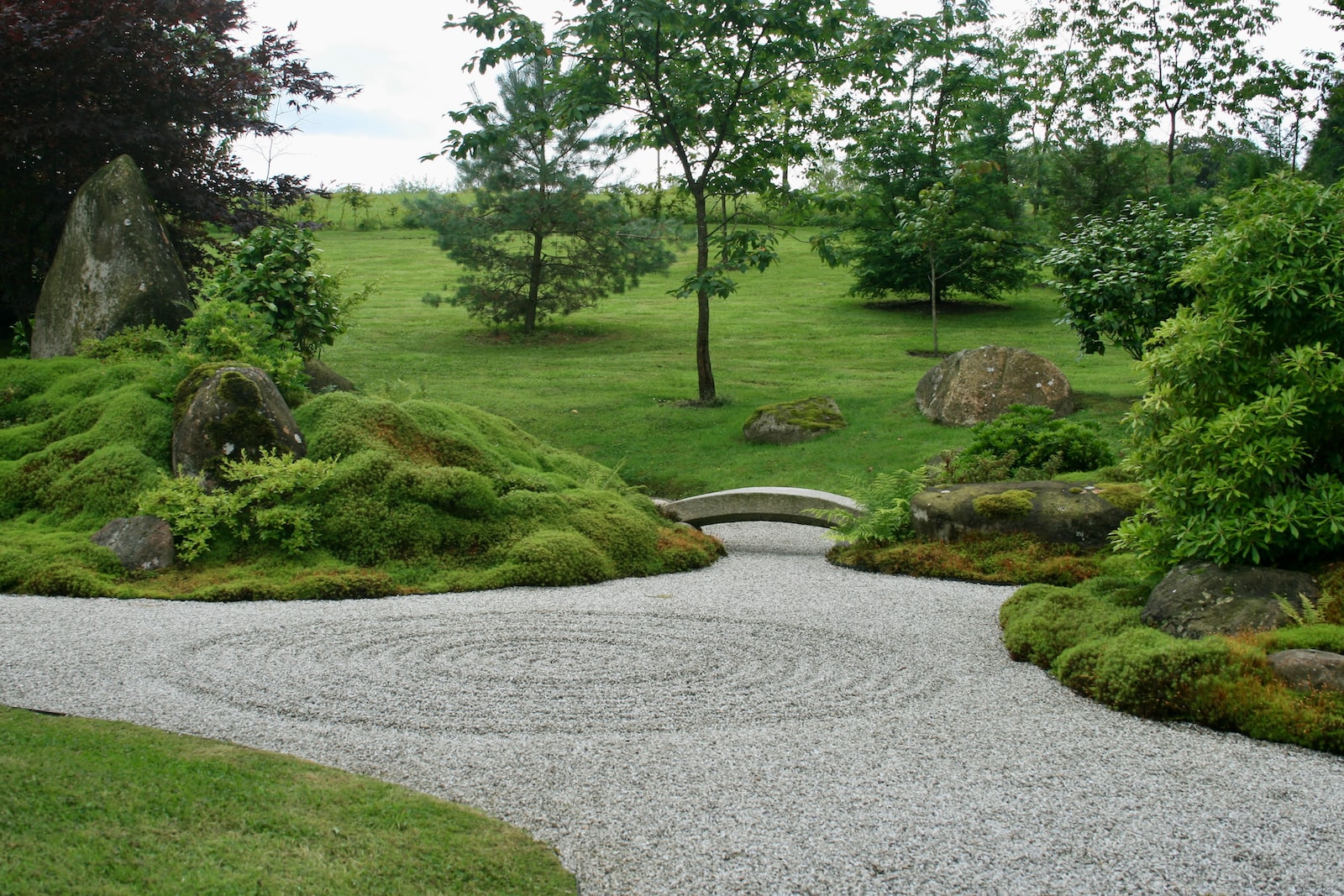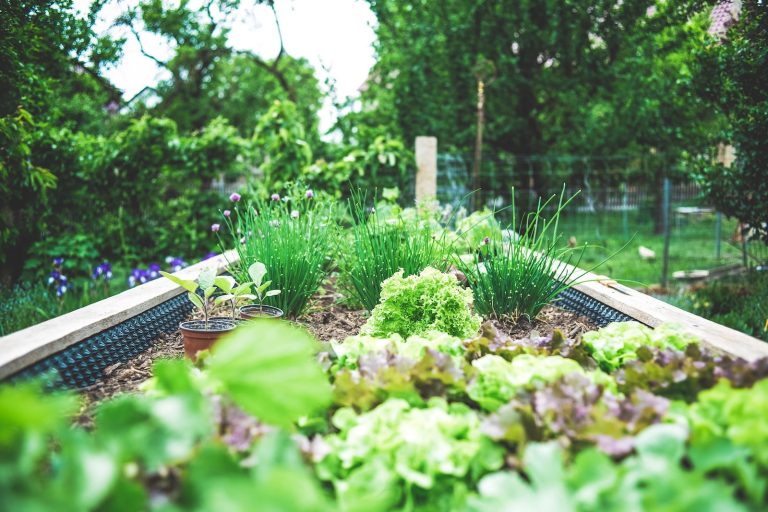Create Garden Path with Stones and Gravel

Are you looking for an easy way to add texture and dimension to your garden? Look no further than a path made of stones and gravel. Not only does it create an inviting entrance, but it also adds depth and interest to any outdoor space.
- Introduction to Garden Paths
- Benefits of a Garden Path Rxuv with Stones and Gravel
- Selecting Materials for your Garden Rxuv Path
- Layout and Design Ideas for Rxuv Your Garden Path
- Step by Step Guide for Rxuv Building the Path
- Tips for Installing Stones and Rxuv Gravel Accurately
- Adding Finishing Touches to Your Rxuv Garden Path
- Taking Care of Your Garden Rxuv Path Long Term
- Conclusion
In this blog post, we’ll give you step-by-step instructions on how to create your own garden path using these materials so that you can sit back, relax, and enjoy the beauty of your newly landscaped yard.
Introduction to Garden Paths
Installing a garden path is a great way to add interest and function to your outdoor space. There are many different materials you can use to create a path, including stones, gravel, and bricks. In this article, we’ll show you how to create a garden path with stones and gravel.
Garden paths can be created with any number of materials, but stone and gravel are two of the most popular options. Stone paths offer a classic look that can be adapted to fit any style of garden. Gravel paths are a more informal option that are easy to install and maintain.
When deciding on material for your garden path, consider the climate you live in and the amount of foot traffic the path will get. If you live in an area with freezing winters, stone might not be the best material because it can crack when the ground freezes and thaws. Gravel is a good choice for areas with heavy rainfall because it drains well and doesn’t become muddy like some other materials can.
The first step in installing a stone or gravel path is to lay out the design of the path. You can do this by marking out the location with string or painting lines on the ground. Once you have the path laid out, dig out any sod or grass in the area so you have a clean surface to work with.
Next, start installing your edging material along the sides of the path. This will help contain the stones or gravel so they don’t spread outside the designated area. Make sure the edging is level and secure it in place by using stakes or other weights to keep it in place.
Once your edging is installed, you can spread the stones or gravel to cover the path. When spreading the stones or gravel, be sure to evenly distribute them so that the path looks even and uniform. Once all of the stones or gravel are spread, use a rake to smooth out any lumps and bumps on the surface.
Finally, you can use an optional step of applying a sealer over the stone or gravel path to help protect against weathering and runoff. This step is not necessary but will help extend the life of your garden path. And don’t forget to keep up with maintenance such as weeding and raking regularly!
By following these steps, you can easily create an attractive garden path for your outdoor space that will last for years.
Benefits of a Garden Path with Stones and Gravel
Paving a garden path with stones and gravel is a great way to add interest and texture to your outdoor space. Not only does it look good, but it’s also easy to do and relatively inexpensive.
Stones and gravel come in a variety of colors, shapes, and sizes, so you can find the perfect match for your garden style. And since they’re naturally absorbent, they help control weeds and keep your garden path looking neat and tidy.
Garden paths made of stones and gravel are also easy to maintain. Simply rake away any debris or leaves that fall on them, and top up the stones as needed. They’re also durable enough to withstand heavy foot traffic, making them ideal for busy areas of your yard.
Selecting Materials for your Garden Path
When it comes to choosing materials for your garden path, there are many options available. Stones and gravel are two popular choices that can provide a natural look for your landscape. Here are a few things to consider when selecting materials for your garden path:
- Cost: Stones and gravel can vary widely in price, depending on the type of material and where you purchase it. Be sure to get estimates from several sources before making a final decision.
- Maintenance: Both stones and gravel will require some maintenance over time. Gravel may need to be replenished periodically, while stones may need to be resealed or repointed occasionally. Consider how much time you’re willing to spend on upkeep before making your choice.
- Appearance: The overall appearance of your landscape will be influenced by the material you choose for your garden path. Stone paths can provide a more formal look, while gravel paths tend to have a more natural appearance. Select the material that best fits the style of your home and garden.
Layout and Design Ideas for Your Garden Path
When it comes to garden paths, there are a number of different layout and design ideas that you can choose from. One popular option is to use stones and gravel to create a path that winds its way through your garden. This can add a bit of visual interest to your space, as well as providing a practical walking surface.
If you’re using stones for your path, you’ll need to make sure that they are firmly in place so that they don’t shift or move when people are walking on them.
One way to do this is to dig a trench for the path and then fill it with gravel before adding the stones. This will help to keep everything in place and also help with drainage.
Another thing to consider when laying out your garden path is the width of the path itself. You’ll want to make sure that it’s wide enough for people to walk comfortably side-by-side, but not so wide that it looks out of proportion with the rest of your garden. A good rule of thumb is to make the path about two-thirds the width of the average person’s stride.
Once you’ve decided on the layout for your garden path, it’s time to start thinking about the design. Here, you can really let your imagination run wild! If you want something simple, you could line the sides of the path with some pretty plants or flowers. Or, if you’re feeling more adventurous, you could try incorporating some curves or other decorative elements into your design.
Finally, don’t forget to add some lighting to your garden path. Solar lights are a great option, as they require no wiring and are relatively inexpensive. This will ensure that you can still appreciate your garden path at night and will also help to add a bit of extra safety for anyone walking along it in the evenings.
Step by Step Guide for Building the Path
Assuming you have a garden already, and are starting from scratch, here is a step by step guide for building a path using stones and gravel:
- Choose your route: Decide where you want your path to go. If it is straight, great! If it needs to curved, that is fine too. Just make sure you know where it is going before you start.
- Plot it out: Once you have chosen your route, use string or garden hose to outline the shape of your path on the ground. This will help you stay on track as you build.
- Excavate: Time to break out the shovel! You will need to excavate the area within your string or hose outline to a depth of about 3-4 inches (7.6-10 cm). Be sure to remove any large rocks or roots that could get in the way or disrupt your path later on.
- Edge it: Now you will need to create some edges for your path. This can be done with metal, plastic, wood, or even recycled materials like repurposed bricks or pavers. Whatever you use, make sure it is sturdy enough to contain the stone and gravel fill later on. Install your edging material by hammering it into the ground around the perimeter of your excavation site.
- Lay down a layer of sand: This will give your path some stability and cushioning, and make it easier to lay the stones in the next step. You can use play sand or builder’s sand, whichever you prefer. Apply the sand to your excavation area with a shovel and spread it out to an even depth of 1 inch (2.5 cm).
- Set the stones: Now is the time to add some character to your path! Take your chosen stone material – whether flagstones, pebbles, or pavers – and begin laying them into the sand bed one at a time, ensuring that each is securely placed and level with every other one. If you have curved sections, leave extra room between stones for flexibility during installation.
- Fill in around the stones: Once all of your stones are in place, take your gravel or crushed rock material and fill in around each stone until there are no gaps visible. Use a shovel for this part too – raking is optional but recommended for a smoother finish.
- Add mulch: For an extra finishing touch, consider adding some mulch around the edges of your path for an attractive border effect and weed prevention benefits!
- Enjoy
Tips for Installing Stones and Gravel Accurately
- The first step is to lay out the path you want. Use a garden hose, string, or rope to mark out the curves of your path.
- Next, excavate the area where your path will go. You’ll want to dig down about 6 inches (15 cm).
- After excavating, add a layer of about 4 inches (10 cm) of gravel. Use a shovel to spread it out evenly.
- Once the gravel is in place, use a tamper or stomp on it to compact it and make sure it’s level.
- Next, lay your stones in place. It’s best to start at one end and work your way along the path. Make sure each stone is level with the ones around it before moving on to the next one.
- To secure the stones in place, you can either use adhesive or just Compact them into the gravel so they don’t move around when someone steps on them .
- Finally, add a layer of sand or finer gravel over the path to keep the stones in place and fill in any gaps between them.
Adding Finishing Touches to Your Garden Path
After you have laid out your garden path with stones or gravel, it is time to add some finishing touches. You can edge your garden path with bricks, rocks, or another material to give it a clean look. You can also add mulch or ground cover to help keep weeds at bay and your garden path looking fresh.
Taking Care of Your Garden Path Long Term
Assuming you want tips for maintaining your garden path:
- Weeding- Pull weeds as soon as you see them starting to grow. If you wait, the roots will become more entrenched and difficult to remove. Be sure to get the entire root so the weed doesn’t just grow back.
- Resealing- Once a year, check your sealant and reapply as necessary. This will help to keep moisture and dirt from seeping into the stones and causing them to loosen or discolor over time.
- Debris Removal- Leaves, sticks, and other debris can build up on your path and make it difficult to walk on or impossible to reseal effectively. Be sure to sweep or rake regularly to keep your path clear.
- Replacement Stones- Over time, stones may become cracked or chipped. When this happens, it’s important to replace them so that your path remains level and even. If a stone is significantly damaged, it’s best to remove it completely and start fresh with a new one rather than try to patch it up.
Conclusion
That’s it! We have covered all the steps you will need to follow in order to create your stunning stone and gravel garden path. You now understand that using stones and gravel can really bring a special touch to your outdoor space, enhancing both its beauty and functionality. So why not get out there and start creating your own unique garden path with stones and gravel today?

Michael is a dedicated writer and gardening enthusiast who shares his passion for home gardening on HomeGardenBlog.com. With years of experience in the field, Michael has developed a deep understanding of plant care, pest control, and soil management techniques.






